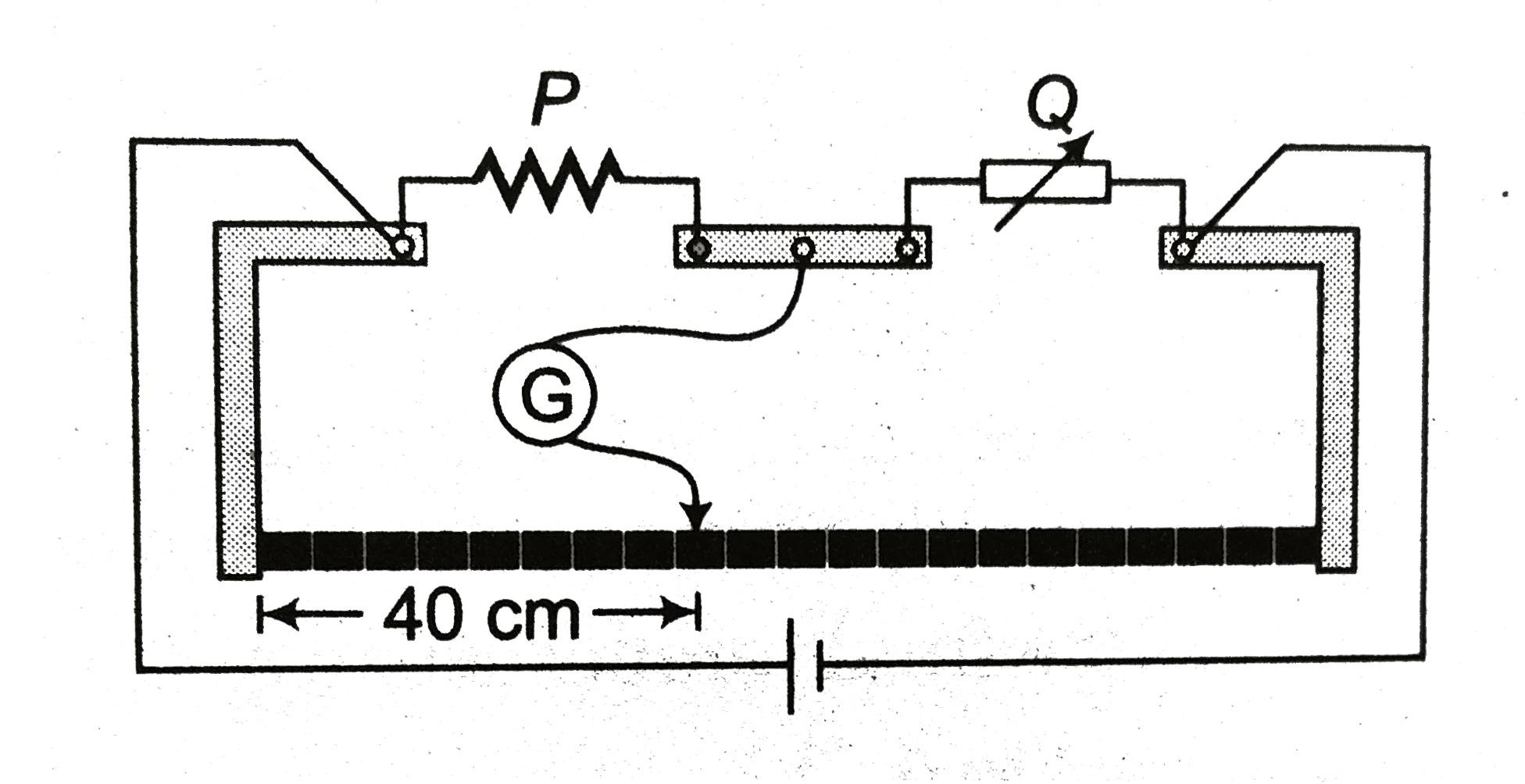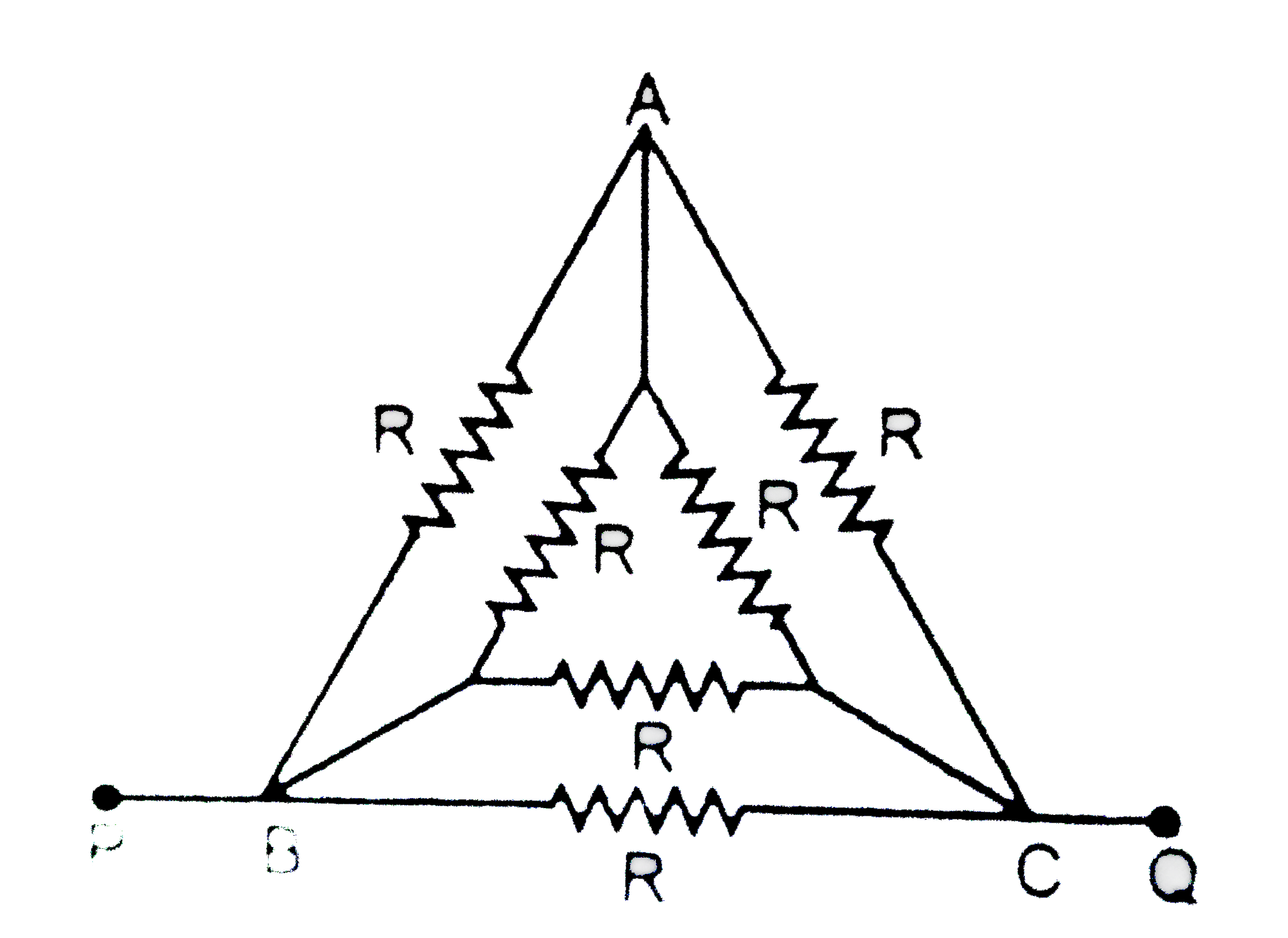Wires and have the same resistance at ordinary (room) temperature. When heated, resistance of increases and that of decreases. We conclude that
P and Q are conductors of different materials
P is n-type semiconductor and Q is p-type semiconductor
P is semiconductor and Q is conductor
P is conductor and Q is semiconductor
The correct Answer is:D
To solve the question, we need to analyze the behavior of the resistances of wires P and Q when subjected to an increase in temperature.
1. Understanding the Resistance Behavior:
- At room temperature, both wires P and Q have the same resistance.
- When the temperature increases, the resistance of wire P increases, while the resistance of wire Q decreases.
2. Identifying the Type of Materials:
- Conductor: Typically, conductors (like metals) have a positive temperature coefficient of resistance. This means that as the temperature increases, the resistance also increases.
- Semiconductor: Semiconductors have a negative temperature coefficient of resistance. This means that as the temperature increases, the resistance decreases.
3. Analyzing Wire P:
- Since the resistance of wire P increases with temperature, we can conclude that wire P behaves like a conductor.
4. Analyzing Wire Q:
- Since the resistance of wire Q decreases with temperature, we can conclude that wire Q behaves like a semiconductor.
5. Conclusion:
- From the observations above, we conclude that wire P is a conductor and wire Q is a semiconductor.
Final Conclusion:
- Wire P is a conductor (positive temperature coefficient) and wire Q is a semiconductor (negative temperature coefficient).
- At room temperature, both wires P and Q have the same resistance.
- When the temperature increases, the resistance of wire P increases, while the resistance of wire Q decreases.
- Conductor: Typically, conductors (like metals) have a positive temperature coefficient of resistance. This means that as the temperature increases, the resistance also increases.
- Semiconductor: Semiconductors have a negative temperature coefficient of resistance. This means that as the temperature increases, the resistance decreases.
- Since the resistance of wire P increases with temperature, we can conclude that wire P behaves like a conductor.
- Since the resistance of wire Q decreases with temperature, we can conclude that wire Q behaves like a semiconductor.
- From the observations above, we conclude that wire P is a conductor and wire Q is a semiconductor.
- Wire P is a conductor (positive temperature coefficient) and wire Q is a semiconductor (negative temperature coefficient).
Topper's Solved these Questions
- SEMICONDUCTORSBOOK - RESONANCE ENGLISHCHAPTER - SEMICONDUCTORSEXERCISE - Exercise 2
16 Videos
- REVISION DPPBOOK - RESONANCE ENGLISHCHAPTER - REVISION DPPEXERCISE - All Questions
463 Videos
- SIMPLE HARMONIC MOTION BOOK - RESONANCE ENGLISHCHAPTER - SIMPLE HARMONIC MOTION EXERCISE - Advanced Level Problems
13 Videos
Similar Questions
Knowledge Check
Two cylinders P and Q have the same length and diameter and are made of different materials having thermal conductivities in the ratio 2:3. These two cyinders ar combined to make a cylinder. One end of P is kept at 100∘C and another end of Q at 0∘C. THe temperature at the interface of P and Q is
A30∘CB40∘CC50∘CD60∘C
In a metre bridge, the gaps are closed by two resistance P and Q and the balance point is obtained at 40cm. When Q is shunted by a resistance of 10Ω, the balance point shifts to 50cm. The values of P and Q are.
 .
.
View SolutionA heating element has a resistance of 100 Ω at room temperature. When it is connected to a supply of 220 V, a steady current of 2A passes in it and temperature is 500∘C more than room temperature. What is the temperature coefficient of resistance of the heating element ?
View SolutionTwo separate bulbs contains ideal gases P and q, respectively maintained at the same temperature. The density of gas P is twice of that of the Q, and the molecular weight of the gas P is half of that of the gas Q. The ratio of the pressure of gas P to that of gas Q is
View SolutionA resistance thermometer measures temperature with the increase in resistance of a wire of high temperature. If the wire is platinum and has resistance of 10Ω at 20∘C and a resistance of 35Ω in a hot furnace, what is the temperature of the hot furnace? (αplatinum=0.0036∘C−1)
View SolutionStatement-1 : In a Meter Bridge experiment, null point for an unknown resistance is measured. Now, the unknown resistance is put inside an enclosure maintained at a higher temperature. The null point can be obtained at the same point as before by decreasing the value of the standard resistance.
Statement-2 : Resistance of metal increases with increase in temperature.
View SolutionStatement-1 : In a Meter Bridge experiment, null point for an unknown resistance is measured. Now, the unknown resistance is put inside an enclosure maintained at a higher temperature. The null point can be obtained at the same point as before by decreasing the value of the standard resistance.
Statement-2 : Resistance of metal increases with increase in temperature.
View SolutionAssertion : A pure semiconductor has negative temperature coefficient of resistance.
Reason: On raising the temperature, more charge carriers are released,. conductance increases and resistance decreases.
View Solution

